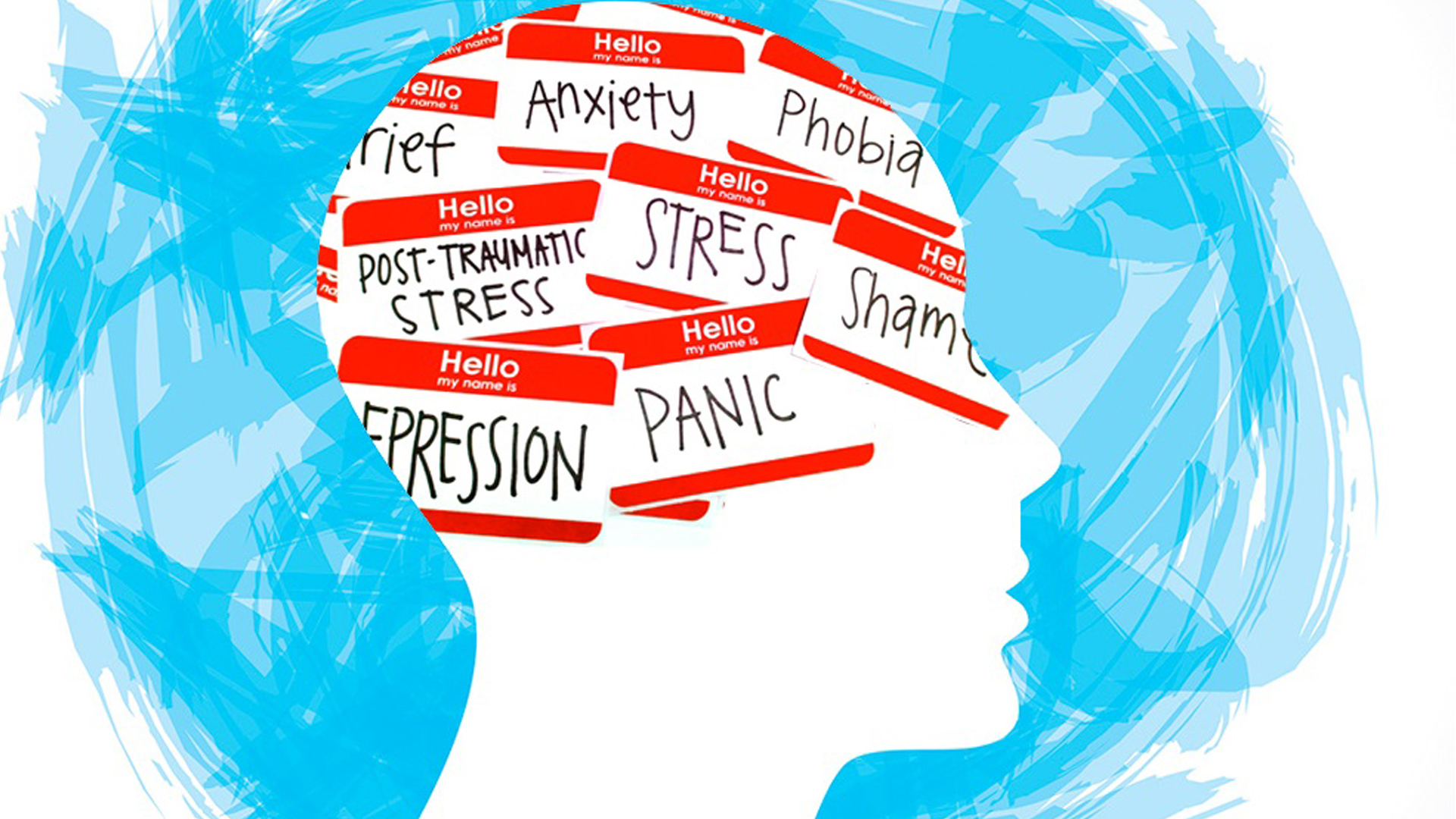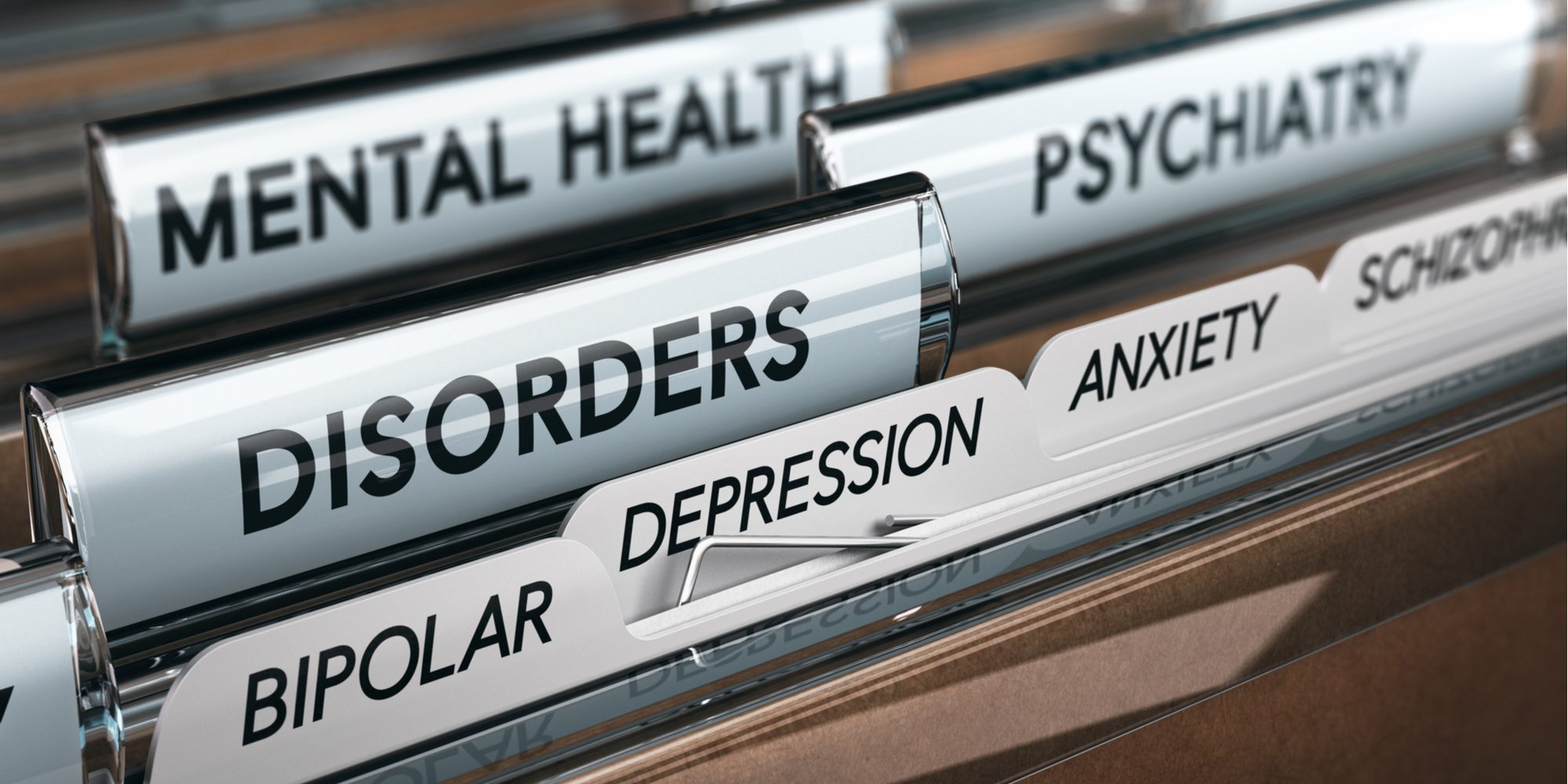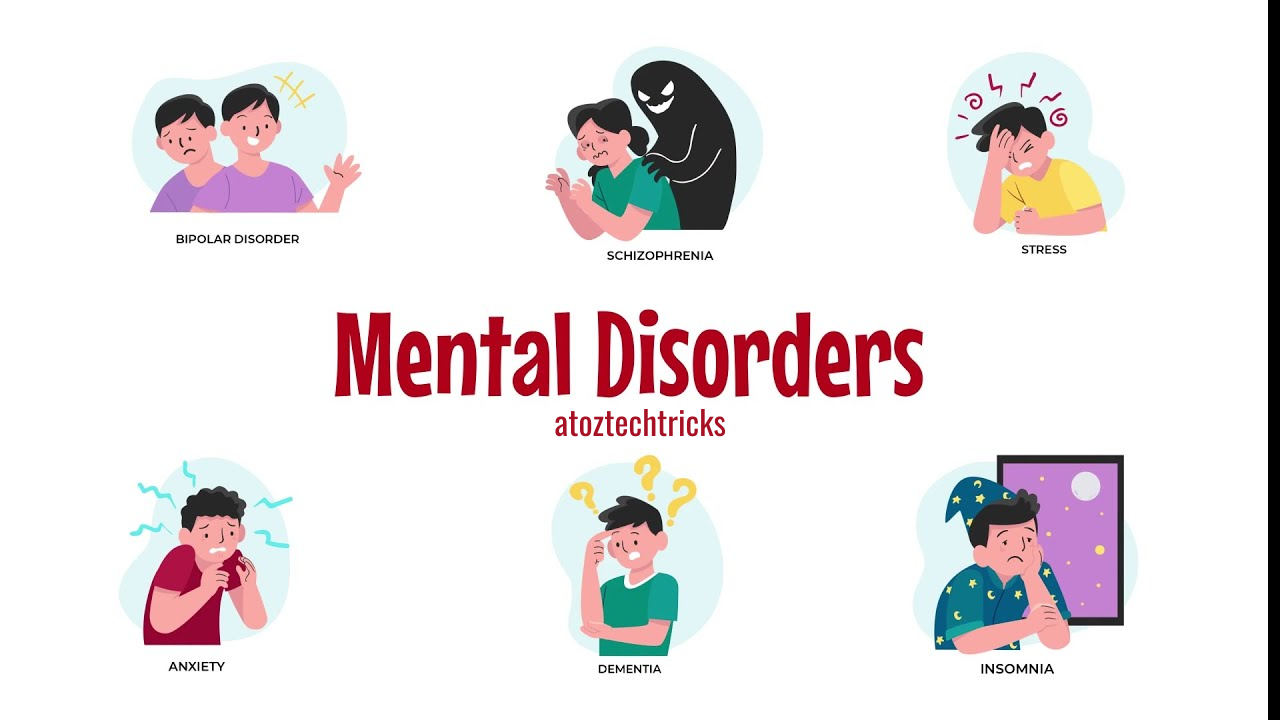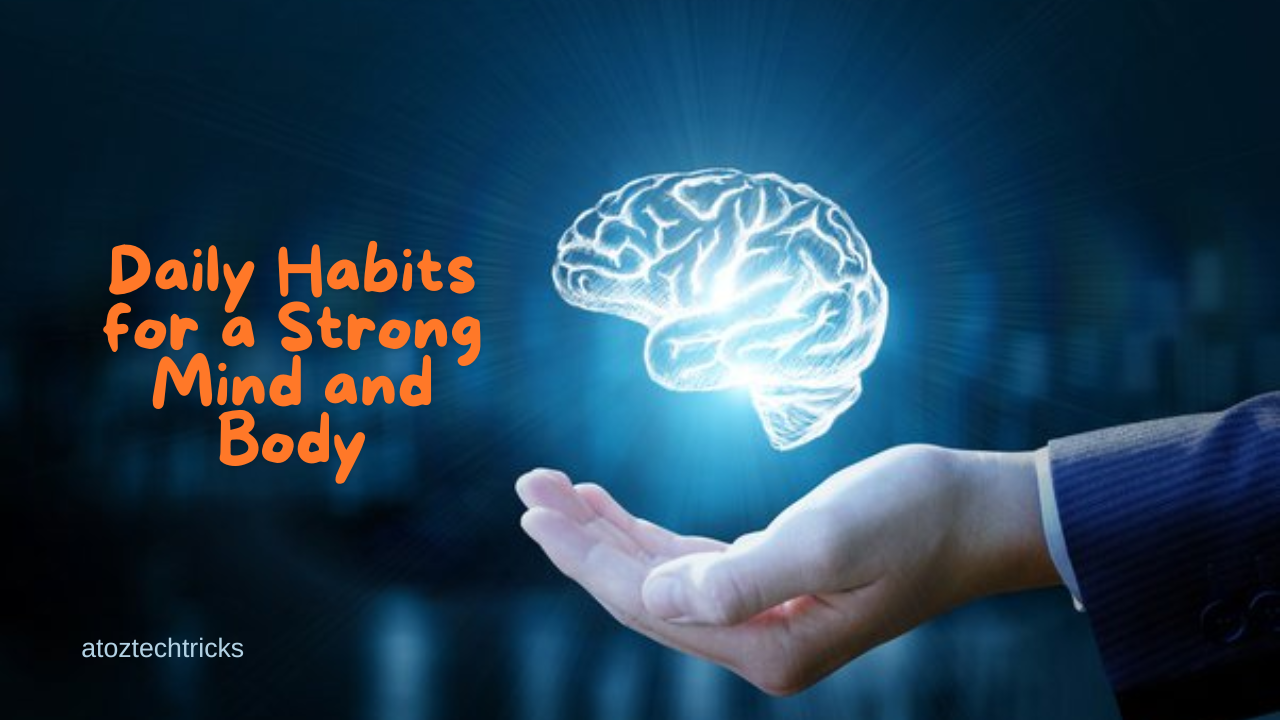Understanding Different Mental Health Disorders
Mental health is critical to overall well-being, yet it is often misunderstood and stigmatized. Understanding mental health disorders is essential not only for those who may be experiencing them but also for those who wish to support others. Mental health disorders are complex and can affect individuals in various ways, from their thoughts and emotions to their behaviour and physical health. This article delves into the different types of mental health disorders, their symptoms, causes, and treatments, aiming to provide a comprehensive understanding of this important topic.
1. What Are Mental Health Disorders?
Mental health disorders, also known as mental illnesses, are conditions that affect a person’s thinking, feelings, mood, or behaviour. These disorders can be occasional or chronic and affect the individual’s ability to relate to others and function daily. Mental health disorders are common, and according to the World Health Organization (WHO), one in four people will be affected by a mental health condition at some point in their lives.
Mental health disorders are categorized into various types, each with its own set of symptoms and challenges. The most common types of mental health disorders include anxiety disorders, mood disorders, psychotic disorders, eating disorders, and personality disorders. Each category encompasses specific disorders that can vary widely in severity and impact.
Mastering Personal Budgeting: Tips and Strategies to Take Control of Your Finances
2. Anxiety Disorders
Anxiety disorders are among the most common mental health disorders. They involve excessive fear or anxiety and include generalized anxiety disorder (GAD), panic disorder, social anxiety disorder, and specific phobias.
- Generalized Anxiety Disorder (GAD): GAD is characterized by chronic and excessive worry about various aspects of life, such as work, health, or personal relationships. People with GAD may find it difficult to control their worry, and physical symptoms like fatigue, restlessness, and muscle tension may accompany the anxiety.
- Panic Disorder: Panic disorder is marked by recurrent, unexpected panic attacks—sudden periods of intense fear that peak within minutes. Symptoms include heart palpitations, sweating, trembling, shortness of breath, and feelings of impending doom. These attacks can be so severe that individuals often fear having another attack, leading to avoidance of certain situations.
- Social Anxiety Disorder: Also known as social phobia, this disorder involves an intense fear of social situations where one may be judged, embarrassed, or humiliated. People with social anxiety disorder often avoid social interactions or endure them with significant distress.
- Specific Phobias: Phobias are intense, irrational fears of specific objects or situations, such as heights, spiders, or flying. The fear is often out of proportion to the actual danger and can lead to avoidance behaviours that interfere with daily life.

3. Mood Disorders
Mood disorders involve disturbances in a person’s emotional state, leading to periods of extreme happiness, sadness, or both. The most common mood disorders include major depressive disorder, bipolar disorder, and cyclothymic disorder.
- Major Depressive Disorder (MDD): MDD, commonly referred to as depression, is characterized by persistent feelings of sadness, hopelessness, and a lack of interest or pleasure in activities once enjoyed. Depression can also cause physical symptoms like changes in appetite, sleep disturbances, and fatigue. In severe cases, individuals may have thoughts of death or suicide.
- Bipolar Disorder: Bipolar disorder involves alternating periods of depression and mania or hypomania. Mania is characterized by an abnormally elevated mood, increased energy, and a decreased need for sleep, often leading to impulsive behaviour. Hypomania is a milder form of mania. The shifts between mood states can be unpredictable and disruptive to daily life.
- Cyclothymic Disorder: Cyclothymic disorder is a milder form of bipolar disorder, with less severe mood swings. Individuals with this disorder experience periods of hypomanic symptoms and periods of depressive symptoms, but the symptoms do not meet the full criteria for a hypomanic episode or a major depressive episode.
4. Psychotic Disorders
Psychotic disorders involve distorted thinking and awareness, often resulting in delusions and hallucinations. The most well-known psychotic disorder is schizophrenia.
- Schizophrenia: Schizophrenia is a chronic and severe mental health disorder that affects how a person thinks, feels, and behaves. People with schizophrenia may seem like they have lost touch with reality. Symptoms include delusions (false beliefs), hallucinations (seeing or hearing things that are not there), disorganized thinking, and impaired functioning. Schizophrenia typically requires lifelong treatment and can be managed with medication and therapy.
- Schizoaffective Disorder: Schizoaffective disorder is a condition that includes symptoms of both schizophrenia and mood disorders, such as depression or bipolar disorder. Individuals with this disorder experience a combination of psychotic symptoms and mood disturbance, which can make diagnosis and treatment challenging.
- Delusional Disorder: Delusional disorder is characterized by the presence of persistent delusions—false beliefs that are not based in reality, such as believing one is being persecuted or has a special relationship with a famous person. Unlike schizophrenia, people with delusional disorder do not usually experience hallucinations or have significant impairment in daily functioning.
How to Adjust Your Budget for Life Changes: A Comprehensive Guide
5. Eating Disorders
Eating disorders are serious conditions related to persistent eating behaviours that negatively impact health, emotions, and the ability to function in important areas of life. Common eating disorders include anorexia nervosa, bulimia nervosa, and binge-eating disorder.
- Anorexia Nervosa: Anorexia nervosa is characterized by an intense fear of gaining weight and a distorted body image, leading to extreme restriction of food intake and significant weight loss. Individuals with anorexia often have a relentless pursuit of thinness and may exercise excessively. This disorder can have severe physical health consequences, including malnutrition, organ damage, and even death.
- Bulimia Nervosa: Bulimia nervosa involves cycles of binge eating followed by behaviours to prevent weight gain, such as vomiting, excessive exercise, or the use of laxatives. Unlike anorexia, individuals with bulimia may maintain a normal weight, making the disorder less visible. However, bulimia can also lead to serious health problems, including electrolyte imbalances, gastrointestinal issues, and heart problems.
- Binge-Eating Disorder: Binge-eating disorder is characterized by recurrent episodes of eating large quantities of food in a short period, accompanied by a feeling of loss of control. Unlike bulimia, binge-eating episodes are not followed by purging behaviours. This disorder often leads to obesity and associated health issues, such as diabetes and heart disease.
6. Personality Disorders
Personality disorders are a group of mental health disorders characterized by enduring patterns of behaviour, cognition, and inner experience that deviate markedly from the expectations of the individual’s culture. These patterns are inflexible and pervasive across a broad range of situations, leading to significant distress or impairment.
- Borderline Personality Disorder (BPD): BPD is characterized by intense and unstable emotions, relationships, and self-image. Individuals with BPD may experience rapid mood swings, fear of abandonment, impulsive behaviours, and difficulty maintaining stable relationships. Self-harm and suicidal behaviour are also common in BPD.
- Antisocial Personality Disorder: Antisocial personality disorder is marked by a disregard for the rights of others, often manifesting in deceitful, manipulative, or criminal behaviour. Individuals with this disorder may lack empathy and remorse and often engage in impulsive or aggressive acts.
- Narcissistic Personality Disorder: Narcissistic personality disorder is characterized by an inflated sense of self-importance, a deep need for admiration, and a lack of empathy for others. Individuals with this disorder may have a grandiose sense of their abilities and achievements and may exploit others to achieve their goals.
7. Obsessive-Compulsive and Related Disorders
Obsessive-compulsive and related disorders involve preoccupations or repetitive behaviours that are distressing and interfere with daily life. The most well-known disorder in this category is obsessive-compulsive disorder (OCD).
- Obsessive-Compulsive Disorder (OCD): OCD is characterized by the presence of obsessions (persistent, unwanted thoughts) and compulsions (repetitive behaviours or mental acts performed to reduce anxiety). Common obsessions include fears of contamination, harm, or making a mistake. Compulsions may involve excessive cleaning, checking, counting, or arranging. OCD can be debilitating, as individuals may spend significant amounts of time performing compulsive rituals.
- Body Dysmorphic Disorder (BDD): BDD involves an obsessive focus on a perceived flaw in appearance, which may be minor or not observable to others. Individuals with BDD may engage in repetitive behaviours, such as mirror checking or excessive grooming, and may seek out cosmetic procedures to fix the perceived flaw.
- Hoarding Disorder: Hoarding disorder is characterized by persistent difficulty discarding or parting with possessions, regardless of their actual value. This behaviour leads to the accumulation of items, often resulting in cluttered living spaces and significant distress or impairment.

8. Trauma and Stressor-Related Disorders
Trauma and stressor-related disorders are conditions that arise in response to a traumatic or stressful event. These disorders can have a profound impact on an individual’s mental health and functioning.
- Post-Traumatic Stress Disorder (PTSD): PTSD is a condition that can develop after exposure to a traumatic event, such as combat, natural disasters, or assault. Symptoms include re-experiencing the trauma through flashbacks or nightmares, avoidance of reminders of the event, negative changes in mood and cognition, and heightened arousal (e.g., being easily startled). PTSD can be chronic and may require long-term treatment.
- Acute Stress Disorder (ASD): ASD is similar to PTSD but occurs in the immediate aftermath of a traumatic event, typically within three days to one month. Symptoms are similar to those of PTSD, but the duration of the disorder is shorter. If symptoms persist beyond one month, the diagnosis may change to PTSD.
- Adjustment Disorders: Adjustment disorders occur in response to a significant life change or stressful event, such as divorce, job loss, or the death of a loved one. Individuals with adjustment disorders may experience emotional or behavioural symptoms that are disproportionate to the stressor, such as depression, anxiety, or conduct problems.
9. Neurodevelopmental Disorders
Neurodevelopmental disorders are a group of conditions that typically manifest early in development and are characterized by developmental deficits that produce impairments in personal, social, academic, or occupational functioning.
- Autism Spectrum Disorder (ASD): ASD is a developmental disorder that affects communication, behaviour, and social interaction. Individuals with ASD may have difficulty understanding social cues, may engage in repetitive behaviours, and may have specific, intense interests. The severity of ASD can vary widely, with some individuals needing significant support and others living independently.
- Attention-Deficit/Hyperactivity Disorder (ADHD): ADHD is characterized by a persistent pattern of inattention, hyperactivity, and impulsivity that interferes with functioning or development. Individuals with ADHD may have difficulty focusing, may be easily distracted, and may act impulsively. ADHD is commonly diagnosed in childhood, but symptoms can persist into adulthood.
10. Causes and Risk Factors for Mental Health Disorders
The exact causes of mental health disorders are not fully understood, but they are believed to result from a complex interplay of genetic, biological, environmental, and psychological factors.
- Genetic Factors: Mental health disorders often run in families, suggesting a genetic component. However, having a family history of a mental health disorder does not guarantee that an individual will develop the disorder, as other factors also play a role.
- Biological Factors: Chemical imbalances in the brain, structural abnormalities, and neurotransmitter dysfunctions have been linked to various mental health disorders. Additionally, hormonal changes, particularly those related to stress, can contribute to the development of these conditions.
- Environmental Factors: Traumatic experiences, such as abuse, neglect, or exposure to violence, can increase the risk of developing mental health disorders. Stressful life events, such as the loss of a loved one or financial difficulties, can also trigger or exacerbate symptoms.
- Psychological Factors: Personality traits, coping mechanisms, and early life experiences can influence an individual’s susceptibility to mental health disorders. For example, individuals with low self-esteem or a history of trauma may be more vulnerable to developing depression or anxiety.
How to Effectively Budget for Unexpected Expenses – Tips and Strategies
11. Treatment and Management of Mental Health Disorders
Effective treatment and management of mental health disorders often require a combination of approaches, including therapy, medication, lifestyle changes, and support from loved ones.
- Therapy: Psychotherapy, also known as talk therapy, is a common treatment for mental health disorders. Cognitive-behavioural therapy (CBT), dialectical behaviour therapy (DBT), and other forms of therapy can help individuals understand and change their thought patterns, behaviours, and emotional responses.
- Medication: Medications, such as antidepressants, antipsychotics, mood stabilizers, and anxiolytics, can be used to manage symptoms of mental health disorders. The choice of medication depends on the specific disorder and individual needs.
- Lifestyle Changes: Regular exercise, a balanced diet, sufficient sleep, and stress management techniques can have a positive impact on mental health. Mindfulness practices, such as meditation and yoga, can also help individuals manage stress and improve emotional well-being.
- Support Systems: Having a strong support system is crucial for individuals with mental health disorders. This can include family, friends, support groups, and mental health professionals who provide understanding, encouragement, and assistance.

12. Reducing Stigma and Promoting Mental Health Awareness
Despite advances in understanding mental health, stigma remains a significant barrier to seeking treatment and support. Reducing stigma and promoting mental health awareness are essential steps in improving access to care and fostering a more compassionate society.
- Education: Educating the public about mental health disorders can help dispel myths and misconceptions. Understanding that mental health disorders are medical conditions, not personal failings, can encourage empathy and support.
- Advocacy: Advocating for mental health policies and resources can improve access to treatment and support services. This includes promoting mental health coverage in insurance plans, funding mental health programs, and ensuring that mental health care is integrated into overall health care.
- Open Dialogue: Encouraging open and honest conversations about mental health can help individuals feel more comfortable seeking help. Sharing personal stories and experiences can also reduce feelings of isolation and normalize the discussion of mental health.
Understanding different mental health disorders is crucial for recognizing the signs and symptoms, seeking appropriate treatment, and providing support to those affected. Mental health disorders are diverse, and each individual’s experience is unique. By increasing awareness, reducing stigma, and promoting mental health education, we can create a society that values mental well-being and supports individuals in their journey toward recovery and a fulfilling life.




Post Comment